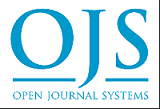Stunting among children under 5 years of age in Surakarta City, Central Java
DOI:
https://doi.org/10.33024/minh.v7i6.306Keywords:
Children Under 5 Years, Maternal Characteristics, StuntingAbstract
Background: Stunting is defined as the growth of a child below the expected level for his or her age. It can occur during pregnancy, breastfeeding, and up to the first 1000 days (about 2 and a half years) of life. Stunting affects the brain development of the children, physical-motor growth, and has long-term implications for their future. The causes of stunting in children are multifaceted and can range from long-term inadequate nutrition to genetic and psychosocial factors.
Purpose: To investigate demographics data of stunting among children under 5 years of age in Surakarta City, Central Java.
Method: A quantitative design and descriptive analytical approach were used. The data were collected from a population of stunted children in the work area of the Pajang Community Health Centre between November and December of 2023. The research used purposive sampling and involved 93 respondents.
Results: Finding characteristics of both children and mothers with specifically, 71% of the stunted children were categorized as short, 52.7% were male, and the majority had a normal birth length. Most mothers of stunted children are aged between 20 and 35 years, 50.5% of mothers are taller than 155 cm (about 5.09 ft), 52.5% of mothers have a high school education and 74.2% of mothers are unemployed.
Conclusion: The characteristics of children and mothers about stunting are complex and interrelated. Therefore, health service providers should provide the best interventions with particular attention to both community and family-centered care.
References
Abdillah, H. Q., Bakhtiar, R., & Zubaidah, M. (2020). Karakteristik Ibu Berdasarkan Perbaikan Gizi Balita Stunting Di Puskesmas Mangkupalas Samarinda. Jurnal Kebidanan Mutiara Mahakam, 8(1), 46–50. https://doi.org/10.36998/jkmm.v8i1.78
Amaha, N. D., & Woldeamanuel, B. T. (2021). Maternal factors associated with moderate and severe stunting in Ethiopian children: analysis of some environmental factors based on 2016 demographic health survey. Nutrition Journal, 20(1), 18. https://doi.org/10.1186/s12937-021-00677-6
Azizah, A. M., Nurmala, I., & Devy, S. R. (2022). The Effect of Mother’s Educational Level and Stunting Incidence on Toddler: A Meta-analysis Meta Analisis: Pengaruh Tingkat Pendidikan Ibu terhadap Kejadian Stunting pada Anak Balita. Print) Azizah, et al | Amerta Nutrition, 6(4), 369–375. https://doi.org/10.20473/amnt.v6i4.2022.369-375
Beal, T., Tumilowicz, A., Sutrisna, A., Izwardy, D., & Neufeld, L. M. (2018). A review of child stunting determinants in Indonesia. Maternal & Child Nutrition, 14(4). https://doi.org/10.1111/mcn.12617
Eliati, E., Handayani, S., Nidia, W. H., Rohani, R., Susanti, D., & Rahliyadi, R. (2021). Faktor-Faktor yang Berhubungan dengan Kejadian Stunting pada Balita Usia 3-5 Tahun di Kecamatan Badar Kabupaten Aceh Tenggara. NASUWAKES: Jurnal Kesehatan Ilmiah, 14(2), 123-135.
Fadare, O., Amare, M., Mavrotas, G., Akerele, D., & Ogunniyi, A. (2019). Mother’s nutrition-related knowledge and child nutrition outcomes: Empirical evidence from Nigeria. PLOS ONE, 14(2), e0212775. https://doi.org/10.1371/journal.pone.0212775
Ministry of Health of the Republic of Indonesia. (2022a). Faktor Penyebab Stunting Pada Balita. https://yankes.kemkes.go.id/view_artikel/1529/faktor-faktor-penyebab-kejadian-stunting-pada-balita
Ministry of Health of the Republic of Indonesia. (2022b). Hasil Survei Status Gizi Indonesia (SSGI) 2022. Kemenkes, 1–150.
Mulyaningsih, T., Mohanty, I., Widyaningsih, V., Gebremedhin, T. A., Miranti, R., & Wiyono, V. H. (2021). Beyond personal factors: Multilevel determinants of childhood stunting in Indonesia. PLOS ONE, 16(11), e0260265. https://doi.org/10.1371/journal.pone.0260265
Muwakhidah, S. (2021). Hubungan Berat Badan Lahir dan Panjang Badan Lahir Dengan Kejadian Stunting Pada Anak Usia 6-24 Bulan di Desa Kedawung Mondokan Kabupaten Sragen Tahun 2021 (Doctoral dissertation, Universitas Muhammadiyah Surakarta).
Nankinga, O., Kwagala, B., & Walakira, E. J. (2019). Maternal employment and child nutritional status in Uganda. PLOS ONE, 14(12), e0226720. https://doi.org/10.1371/journal.pone.0226720
Nugroho, M. R., Sasongko, R. N., & Kristiawan, M. (2021). Faktor-faktor yang Mempengaruhi Kejadian Stunting pada Anak Usia Dini di Indonesia. Jurnal Obsesi : Jurnal Pendidikan Anak Usia Dini, 5(2). https://doi.org/10.31004/obsesi.v5i2.1169
Nurhidayati, T., Rosiana, H., & Rozikhan, R. (2020). Usia Ibu Saat Hamil Dan Kejadian Stunting Pada Anak Usia 1-3 Tahun. Midwifery Care Journal, 1(5), 122–126. https://doi.org/10.31983/micajo.v1i5.6491
Pakpahan, J. P. (2021). Cegah Stunting Dengan Pendekatan Keluarga. Penerbit Gava Media.
Pusmaika, R., Novfrida, Y., Simatupang, E. J., Djami, M. E. U., & Sumiyati, I. (2022). Hubungan Usia Ibu Saat Hamil dengan Kejadian Stunting Pada Balita di Kabupaten Tangerang. Indonesian Health Issue, 1(1), 49–56. https://doi.org/10.47134/inhis.v1i1.11
Qurani, R. M., Karuniawaty, T. P., John, R. E., Wangiyana, N. K. A. S., Setiadi, Q. H., Tengkawan, J., Septisari, A. A., & Ihyauddin, Z. (2022). Correlation Between Maternal Factor and Stunting Among Children 6-12 Months Old in Central Lombok. Journal of Public Health Research and Community Health Development, 5(2), 107. https://doi.org/10.20473/jphrecode.v5i2.23525
Rahayu, A., Yulidasari, F., Putri, A. O., & Anggraini, L. (2018). Study Guide - Stunting dan Upaya Pencegahannya. In Buku stunting dan upaya pencegahannya.
Rahmandiani, R. D., Astuti, S., Susanti, A. I., Handayani, D. S., & Didah. (2019). Hubungan Pengetahuan Ibu Balita Tentang Stunting Dengan Karakteristik Ibu dan Sumber Informasi di Desa Hegarmanah Kecamatan Jatinangor Kabupaten Sumedang. Jsk, 5(2), 74–80. http://jurnal.unpad.ac.id/jsk_ikm/article/view/25661/0
Septyasrini, N., & Rahayuningtyas, F. B. (2018). Hubungan Tingkat Pengetahuan Dan Status Pekerjaan Dengan Pemberian Asi Eksklusif. Jurnal Berita Ilmu Keperawatan, 11(1), 19–27. https://doi.org/10.23917/bik.v11i1.10588
Soliman, A., De Sanctis, V., Alaaraj, N., Ahmed, S., Alyafei, F., Hamed, N., & Soliman, N. (2021). Early and long-term consequences of nutritional stunting: From childhood to adulthood. Acta Biomedica, 92(1), 1–12. https://doi.org/10.23750/abm.v92i1.11346
Sumarsono, K. F. P., & Irwanto, I. (2022). The Influence of Short Maternal Height On Stunting Children. Indonesian Midwifery and Health Sciences Journal, 6(1), 58–65. https://doi.org/10.20473/imhsj.v6i1.2022.58-65
Susilaningsih, D. (2020). Gambaran Faktor-Faktor Yang Berhubungan Dengan Kejadian Stunting Pada Anak 24-60 Bulan Di Wilayah Puskesmas Ceper [Universitas Muhammadiyah Surakarta]. https://eprints.ums.ac.id/84438/11/Naskah%20Publikasi-2.pdf
Thompson, A. L. (2021). Greater male vulnerability to stunting? Evaluating sex differences in growth, pathways and biocultural mechanisms. Annals of Human Biology, 48(6), 466–473. https://doi.org/10.1080/03014460.2021.1998622
Thurstans, S., Opondo, C., Seal, A., Wells, J., Khara, T., Dolan, C., Briend, A., Myatt, M., Garenne, M., Sear, R., & Kerac, M. (2020). Boys are more likely to be undernourished than girls: a systematic review and meta-analysis of sex differences in undernutrition. BMJ Global Health, 5(12), e004030. https://doi.org/10.1136/bmjgh-2020-004030
Wahyuningrum, E. (2020). Hubungan Berat Badan Lahir Panjang Badan Lahir Dan Pemberian ASI Eksklusif Dengan Kejadian Stunting Di Puskesmas Gatak [Universitas Muhammadiyah Surakarta]. https://eprints.ums.ac.id/88878/1/NASKAH%20PUBLIKASI.pdf
World Health Organization. (2015). Stunting in a Nutshell. Https://Www.Who.Int/News/Item/19-11-2015-Stunting-in-a-Nutshell. https://www.who.int/news/item/19-11-2015-stunting-in-a-nutshell
World Health Organization. (2023). Stunting prevalence among children under 5 years of age (%) (model-based estimates). https://www.who.int/data/gho/data/indicators/indicator-details/GHO/gho-jme-stunting-prevalence
Yani, D. I., Rahayuwati, L., Sari, C. W. M., Komariah, M., & Fauziah, S. R. (2023). Family Household Characteristics and Stunting: An Update Scoping Review. Nutrients, 15(1), 233. https://doi.org/10.3390/nu15010233
Zamani, L., & Rusiana, D. A. (2023). Angka Stunting di Solo 788 Kasus, Gibran: Masih Banyak. https://regional.kompas.com/read/2023/03/06/141210878/angka-stunting-di-solo-788-kasus-gibran-masih-banyak
Downloads
Published
How to Cite
Issue
Section
License
Copyright (c) 2024 Malahayati International Journal of Nursing and Health Science

This work is licensed under a Creative Commons Attribution-ShareAlike 4.0 International License.









